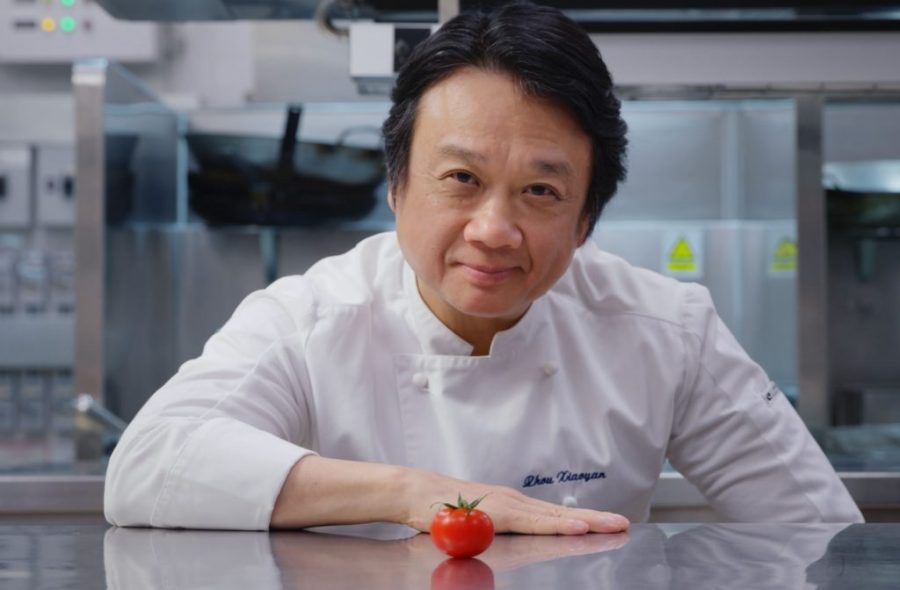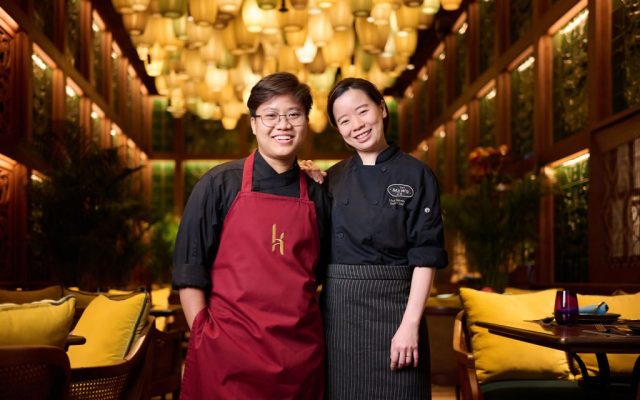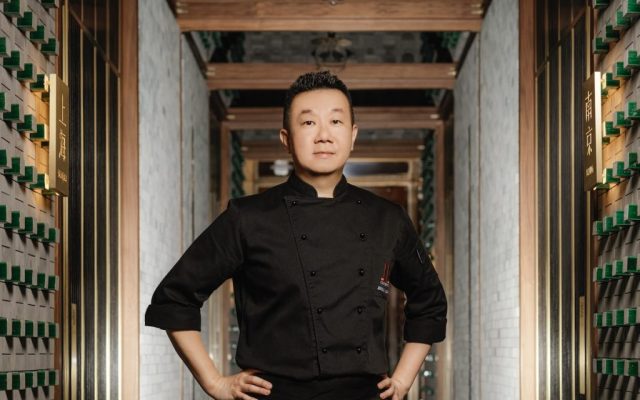Huaiyang cuisine has stood rightfully among China’s Four Great Culinary Traditions for centuries. Originating from the riverside areas of Jiangsu province, the cooking style’s enduring success rests on a few key foundations: delicious seafood, seasonal ingredients, intricate techniques, visually stunning presentations and a focus on natural flavours.
That’s according to the “Godfather of Huaiyang cuisine” himself. Born in Huai’an, in Jiangsu province, celebrity Master Chef Zhou Xiaoyan has dedicated his career to his home’s culinary traditions. In November 2021, Sands China opened The Huaiyang Garden at The Londoner Macao and invited him to helm the restaurant. It’s been a runaway success, earning two Michelin stars in just two years.
“Huaiyang cuisine is steeped in China’s cultural significance,” explains Zhou, who recently visited his restaurant in Macao to present a special spring tasting menu. “Each dish tells a story, often reflecting the lives and aesthetics of the literati.”
He’s referring to the artists, poets and scholars in imperial Chinese society who admired the cooking style so much that they penned texts and poems celebrating its essence. It’s since become the go-to cuisine for official gatherings because of its mild, subtle flavours, which please a roomful of diverse palates.
[See more: Two stars in two years: The Huaiyang Garden takes home its second Michelin star]
But what makes it different from other regional Chinese cuisines? We spoke with Zhou, the world’s foremost expert, to learn what makes the culinary style so special.
1. The knifework is next level
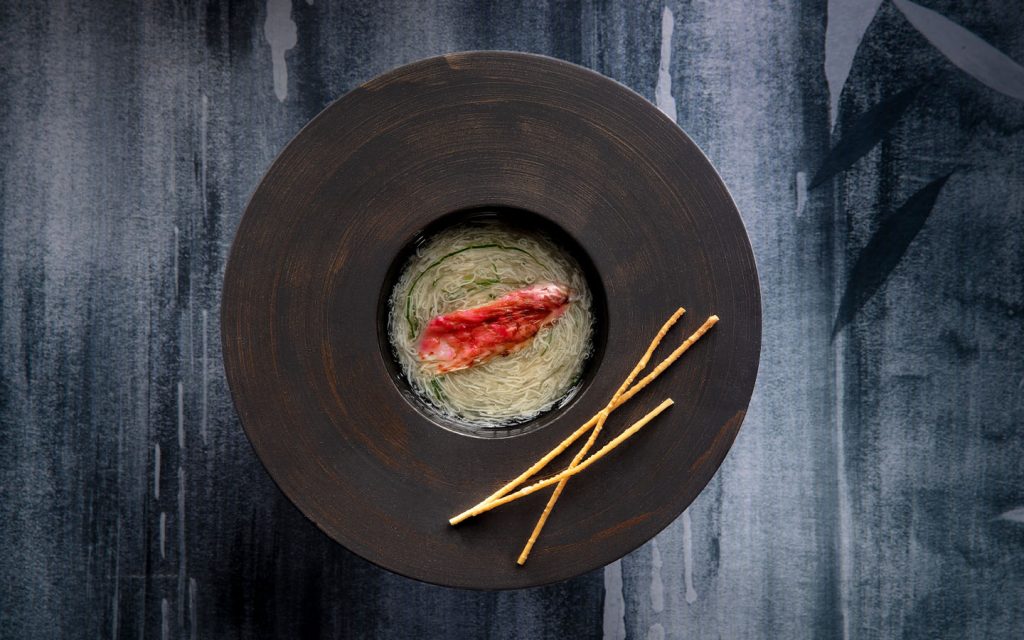
Behind nearly every Huaiyang dish, there are hours, if not days, of rigorous preparation that takes years to master. According to Zhou, knife skills are critical and its compulsory to pass a series of exams.
He spent years honing his skills on turnips and potatoes before advancing to bean curd and stem lettuce. In one culinary exam, he had to remove bones from a fish without changing their shape. In another, he sliced a single piece of bean curd into 24 even sections – a feat that took rigorous practice to perfect.
Zhou’s epic knifework shines in his dish of shredded bean curd with crab meat and egg white in superior soup, where he cuts hundreds of paper-thin strands of bean curd by hand.
“It took me 20 years to pass the first three assessments and move into the exceptional level,” says Zhou. “The extensive training required for Huaiyang cuisine certainly makes it rarer and lesser-known globally. The craftsmanship required means that its restaurants are not so easily established.”
2. It’s all about the freshwater ingredients
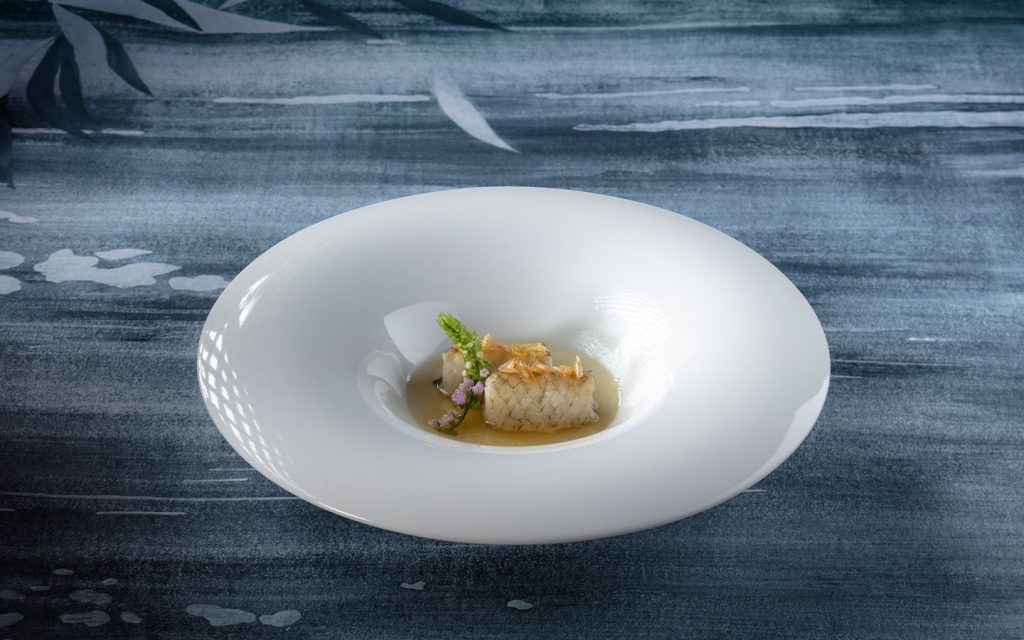
Tracing its roots back to the Huaihe and Yangtze rivers, Huaiyang cuisine is deeply connected to the water. According to Zhou, over a third of the ingredients in his dishes are sourced from freshwater rivers and lakes across Jiangsu.
“We often use Mandarin, hilsa herring, and saury fish, as well as freshwater crabs and shrimp,” says Zhou. “We also use many vegetables that grow in freshwater, such as water chestnuts, arrowhead and Chinese celery.”
To taste Jiangsu’s aquatic bounty, look no further than the chef’s steamed hilsa herring with 20-year Huadiao Chinese wine. The deliciously rich fish is caught in the waterways near the Yangtze River in Jiangsu, and is the perfect canvas for Zhou’s interplay of flavours.
3. Seasonality is incredibly important
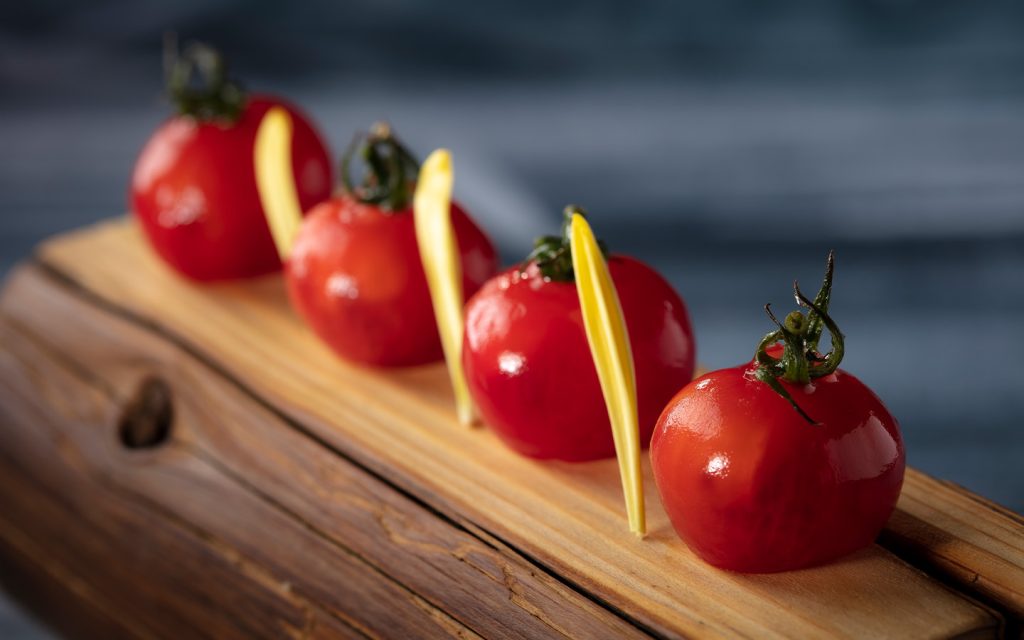
Fresh, seasonal ingredients are the star of any Huaiyang dish. Zhou’s outwardly simple dish of cherry tomatoes filled with walnuts and homemade sauce is a case in point. This vibrant appetiser features fruit ripe off the vine, carefully hollowed, and filled with a crisp mustard salad and crunchy nuts in a rich dressing.
“It may look like an ordinary tomato, but bite into one, and you’ll discover many different flavours and textures,” the chef explains, adding that it perfectly represents the freshness of spring.
Traditionally, the dish calls for produce harvested from Jiangsu. But Zhou and his team scoured the globe for the perfect tomato, ultimately choosing a Dutch variety for its sturdy, plump shape and superb balance of sweetness and tartness.
4. It’s easy on the seasonings
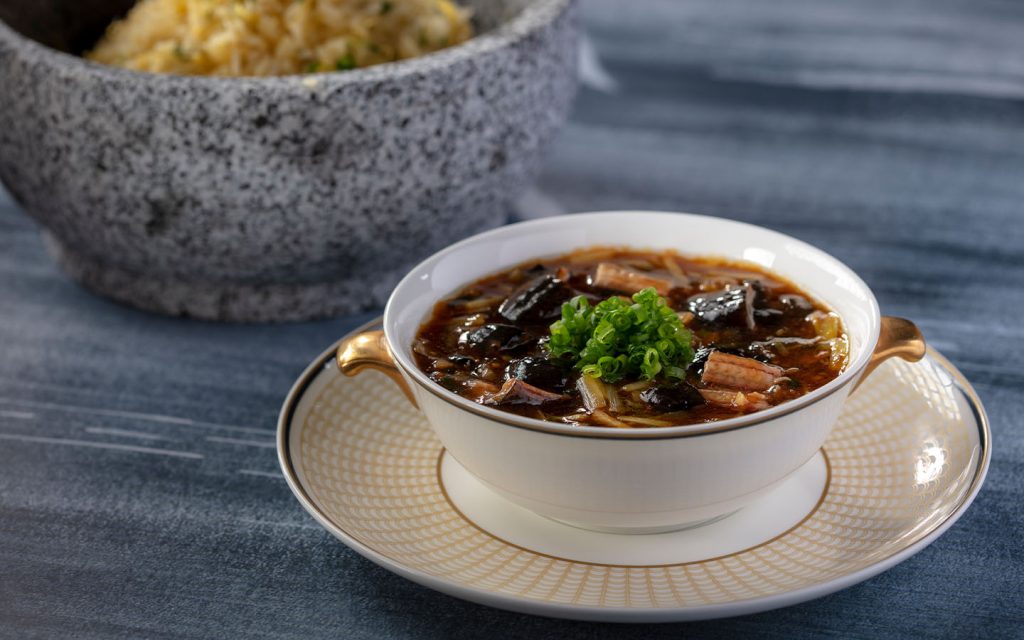
You won’t find any numbing peppercorns or heavy spices in the Huaiyang culinary style. Instead, it’s all about minimal seasoning, so the ingredients’ natural flavours can shine, says Zhou.
When he does choose to use herbs and spices, he does so selectively. The same goes for garnishes. For example, his dish of baked rice with yellow eel and chives lets the ingredients shine through, with the chives’ mild flavour perfectly enhancing the richness of the fish and comforting texture of the rice.
5. Soup is treated like a delectable condiment
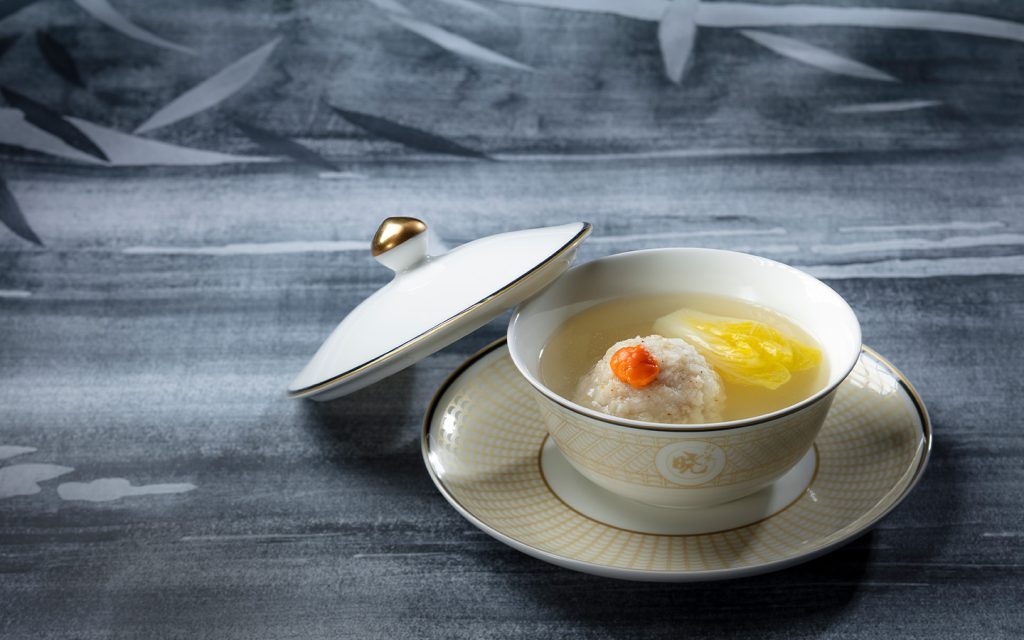
You can never get too much of the exquisitely flavoured broths that are such a hallmark of Huaiyang cuisine. Zhou’s stewed pork ball with crab roe in superior soup illustrates this perfectly.
“We often enhance dishes in Huaiyang cuisine by pouring some soup on top,” Zhou explains. This small but labour-intensive addition is believed to elevate the flavour of everything from delicate fish and robust meat to humble vegetables.
Not just any soup will do. The broth must be clear but have a rich, complex flavour, a process that takes hours and often surprises many diners. “You can find pork balls everywhere in China,” he says. “But when people from other regions visit Yangzhou and eat the local stewed pork balls, they are always surprised by the incredibly tender texture and clear soup.”
